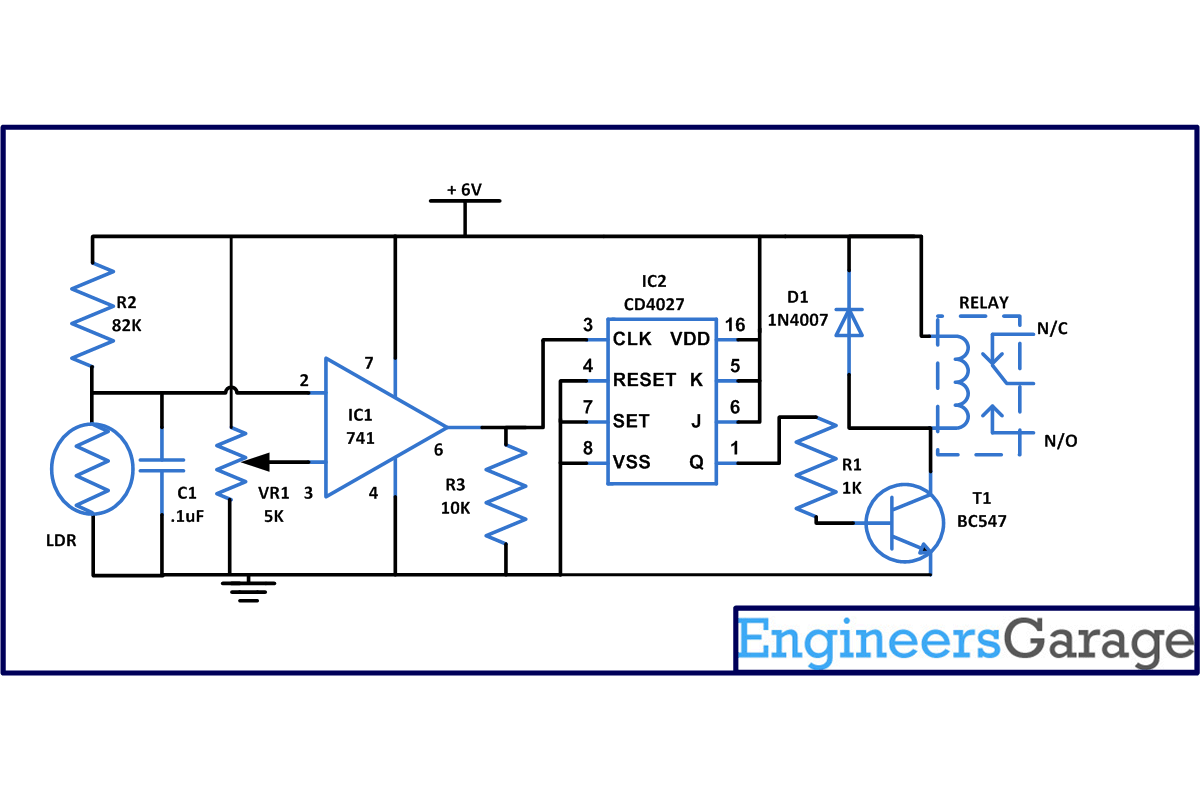Normally, home appliances are controlled by means of switches, sensors, etc. However, physical contact with switches may be dangerous. The circuit described here requires no physical contact for operating the appliance. You just need to move your hand over the light dependent resistor (LDR). The device connected to it switches “on” when you put your hand over the LDR and remains “on” until you again move your hand over it.
The wireless switch circuit is based on two ICs: one is operational amplifier LM741 and JK Flip Flop CD4027. An op-amp produces an output voltage that is hundreds of thousand times larger than the voltage difference between its input terminals. CD4027 is a master slave JK flip flop IC which works in toggle mode. Here this IC can be used to change the state by the signal applied to one or more control inputs and will have one or two outputs. CD4027 has four inputs namely J, K, Set and Reset and it contain two outputs namely Q and Q bar (Q not).
[[wysiwyg_imageupload:7848:]]
Fig. 1: Prototype Of Wireless Switch Circuit On Breadboard
The wireless switch circuit comprises of Operational amplifier LM741 (used as a sensitive voltage comparator), LDR, Preset VR1 (which provides a reference voltage to the non-inverting terminal pin 3 and LDR), R2( connected to inverting pin 2 of IC1) and few more components.
Working: When we do not put our hand on LDR device remains off and as a result pin 2 of IC1 goes high. Consequently, output pin 6 of IC1 remains low.
As soon as anyone puts his hand over LDR, pin 2 of IC1 goes low in comparison to pin 3 of IC1 . Pin 6 becomes high thus providing a clock pulse to pin 13 of IC2 which is a flip flop whose stage is controlled by the logic levels present at J and K input with some internal control. Change in state occurs at the positive going transition of the clock pulse. In this, set and reset pins are independent of the clock and they are initiated when a high signal is present on any of the input pins.
The circuit shown is triggered on the leading edge of the switch pulse which means that output changes when you again put your hand over LDR. From the circuit you can see that both J and K are tied to high input so at every negative or positive transition, the clock pulse pin 13 toggles between high to low. This can be verified with the help of the truth table of the JK flip flop. Therefore, when it receives the clock pulse from IC1 due to hand over LDR, transistor connected to pin15 starts conducting and we will receive the output with the help of relay. You can adjust the sensitivity of LDR with the help of VR1.
Circuit Diagrams
Project Components
Project Video
Filed Under: 555 Timers, Electronic Projects
Filed Under: 555 Timers, Electronic Projects



Questions related to this article?
👉Ask and discuss on Electro-Tech-Online.com and EDAboard.com forums.
Tell Us What You Think!!
You must be logged in to post a comment.